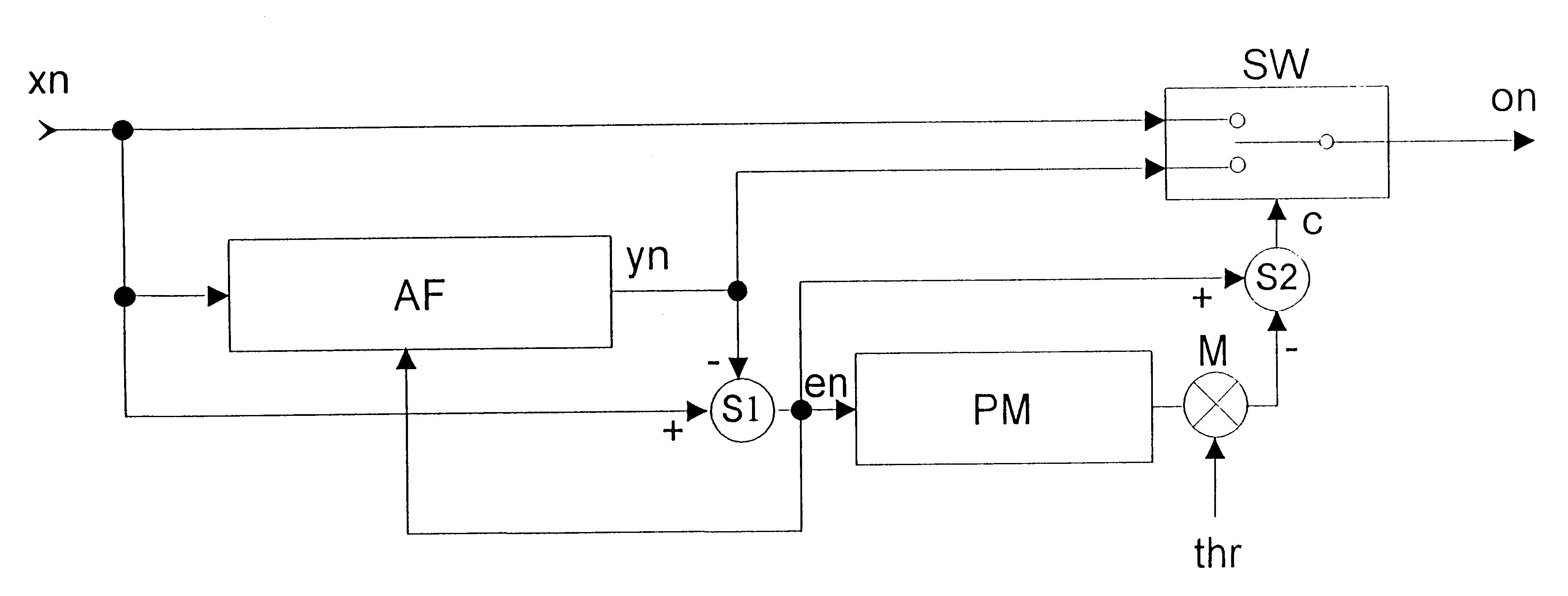Method, equipment and recording device for suppressing pulsed interference in analogue audio and/or video signals
a technology of analogue audio and/or video signal, which is applied in the direction of digital signal error detection/correction, television system, broadcast system receiving, etc., can solve the problems of high complexity, unrecognized clicks, and many clicks that do not have a larger amplitude than the peak signal,
- Summary
- Abstract
- Description
- Claims
- Application Information
AI Technical Summary
Benefits of technology
Problems solved by technology
Method used
Image
Examples
Embodiment Construction
FIG. 1 illustrates a block diagram of an arrangement according to the invention for detecting and interpolating clicks. Detection and interpolation is carried out in one step here, using the same adaptive filter. An adaptive filter AF acting as a linear forward predictor is fed the input signal x.sub.n. In doing so, the signal may, if required, be delayed beforehand by a delay stage. The filter AF decorrelates the input signal and delivers the output signal y.sub.n after filtering and / or evaluation. The error signal e.sub.n is then determined from the input signal x.sub.n and the output signal y.sub.n by means of a summer S1. The clicks in this error signal are therefore markedly more pronounced in relation to the level of the useful signal, with the result that the click can be detected with much more precision than in the original signal.
A sample value in the input signal x.sub.n is designated as distorted if the absolute instantaneous value of the error signal e.sub.n exceeds a t...
PUM
 Login to View More
Login to View More Abstract
Description
Claims
Application Information
 Login to View More
Login to View More - R&D
- Intellectual Property
- Life Sciences
- Materials
- Tech Scout
- Unparalleled Data Quality
- Higher Quality Content
- 60% Fewer Hallucinations
Browse by: Latest US Patents, China's latest patents, Technical Efficacy Thesaurus, Application Domain, Technology Topic, Popular Technical Reports.
© 2025 PatSnap. All rights reserved.Legal|Privacy policy|Modern Slavery Act Transparency Statement|Sitemap|About US| Contact US: help@patsnap.com


